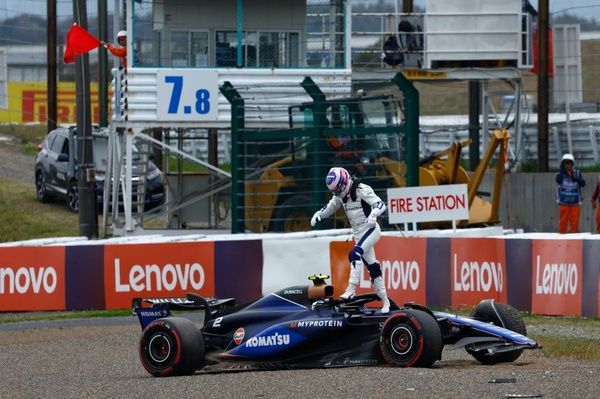Coitus interruptus
Following the end of the Brazilian Grand Prix under a full-course yellow, should Formula One consider green-white-checkered finish?

Photo by: XPB Images
While the whole Formula One fan community has focused its post-Brazilian Grand Prix attention on a potential illegal passing move by Sebastian Vettel as well as how exciting the race was, my own attention was grabbed by how anti-climatic the end of the whole thing was, under full-course yellow. What should have been a an apotheosis type of finale, the best moment of the year, ended up being a procession of slow cars crossing the finish line. The 'image' guy in me was definitely frustrated by the missed opportunity, and even if the safety car pulled onto the pit lane right before the checkered flag was dropped (to keep up appearances, I assume), the party was somewhat ruined.
Beyond the photo-finish that never happened, there is also the sporting dimension: essentially, the race for the Formula One 2012 World Championship was over with a little bit than one lap to go when Paul di Resta crashed out of the race - the worst timing. It remains to be seen what would have happened, but the fact is: the last lap went missing at the most critical point in the race and the World Championship.
With all those points considered and to avoid this type of situation, should the FIA start a reflection and consider implementing a green-white-checkered finish rule?
Granted, a Grand Prix ending under a full-course yellow has not happened often in history (five times, to be precise) so the FIA has probably more urgent items on its agenda to address. But for many different reasons, I'm ready to bet that we will start seeing more and more of them in the near future and to make sure those races do finish under competitive conditions (which should always be the goal in racing), the FIA might want to start planning ahead.
Interestingly enough, a similar situation also happened two months ago at the IndyCar season finale at the Auto Club Speedway when the race (and the championship) also finished under a full-course yellow. What made this one even worse in terms of 'image' took an almost funny dimension: one of the IndyCar safety truck stole the show by crossing the finish line at the exact same time than the new champion Ryan Hunter-Reay - goodbye glory shots…
On their side, NASCAR has initially struggled with the idea of green-white-checkered finish, and has experimented for a few years with it, in one form or another. It has now reached a good balance in its use. In consequence, not only the show has improved, but the drivers feel they still have a shot at real racing all the way to the checkered flag.
I'm perfectly aware that Formula One and NASCAR are two totally different forms of racing, but they also share many common elements. History have demonstrated that many regulations typical of one series have been adopted by the other series with success: the use of the safety (a.k.a. 'pace') car in Formula One is the most notorious example. Another success story is the use of pit stops (with our without refuel).
Obviously, the idea would be met with resistance and concerns. Some of those concerns are quite legitimate, such as the fuel regulation - adding laps (a minimum of two) to a Grand Prix would certainly have an impact in terms of amount of fuel to carry. But the fact remains: ending a race under a full-course yellow is certainly not the good for the sport. Fans want to see a real finish and race car drivers want to have competitive conditions all the way to the end.
Be part of Motorsport community
Join the conversationShare Or Save This Story
Subscribe and access Motorsport.com with your ad-blocker.
From Formula 1 to MotoGP we report straight from the paddock because we love our sport, just like you. In order to keep delivering our expert journalism, our website uses advertising. Still, we want to give you the opportunity to enjoy an ad-free and tracker-free website and to continue using your adblocker.
























Top Comments